TemariKai ToolKit - Sujidate Uwagake Kagari 筋 立て上掛け
Sujidate Uwagake Kagari translates to: sujidate, vein or strip or line; uwa, over; gake, stitch. It is a particular application of the traditional
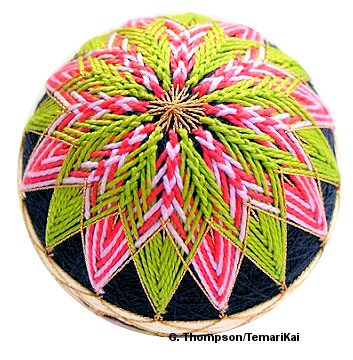 Uwagake Chidori Kagarai, such that the
thread is carried over only 1 previous row of stitching rather than all.
It creates a single raised rib, similar to that found in a leaf or
flower petal, rather than the intewoven wedge of the traditional uwagake
technique. Variations of application can occur, specific to a given
pattern. Which marking lines or sets of marking lines are worked on, and
whether there are any variations from this basic stitch will be
contained in the directions for the particular temari design you are
making. The only thing that is needed to learn is this basic stitch
execution.
Uwagake Chidori Kagarai, such that the
thread is carried over only 1 previous row of stitching rather than all.
It creates a single raised rib, similar to that found in a leaf or
flower petal, rather than the intewoven wedge of the traditional uwagake
technique. Variations of application can occur, specific to a given
pattern. Which marking lines or sets of marking lines are worked on, and
whether there are any variations from this basic stitch will be
contained in the directions for the particular temari design you are
making. The only thing that is needed to learn is this basic stitch
execution. 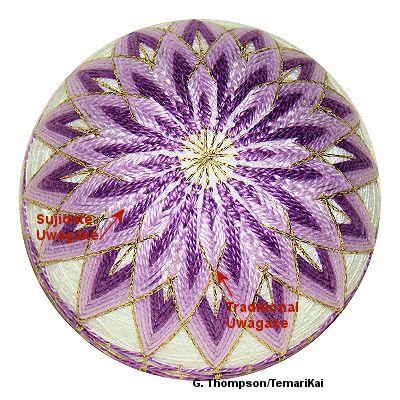 |
The photo at left highlights the difference between Sujidate Uwagake Kagari and Uwagake Chidori Kagari. |
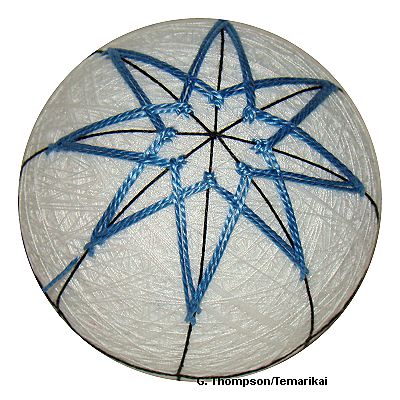 |
This example is worked on a Simple 8 division. To begin, work 2 rows of traditional Uwagake Chidori Kagari. Also, Sujidate will be easier to maneuver if all stitching is started and stopped at a lower point rather than a pole point. |
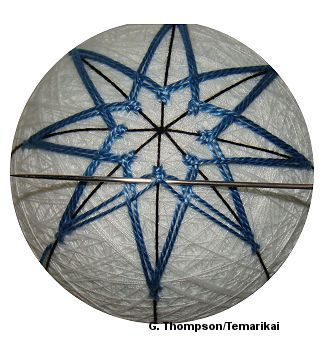 |
Carry the working thread over the thread of only the previous row as shown in the photo to the left. Carefully insert the needle just above the previous row's stitch; note that the width of the stitches will remain the same rather than widening as in traditional uwagake. Attention should be paid to being sure the stitch is taken just under the previous round; don't allow things to slide lower. |
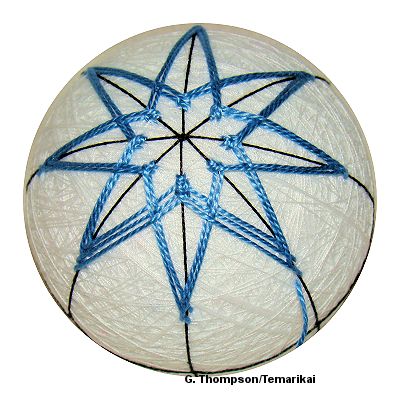 |
Complete the stitch, being careful to keep the thread crossover aligned on the marking line for crisp, neat appearance. |
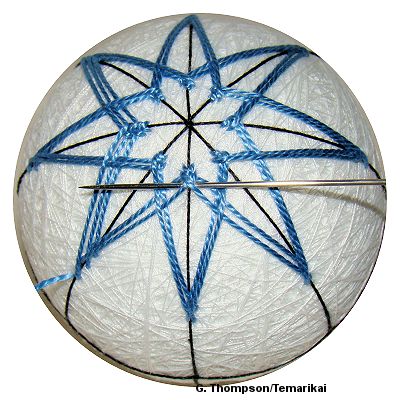 |
Continue to work in this manner, working on alternate marking line sets to create a standard kiku design (or as pattern directs). |
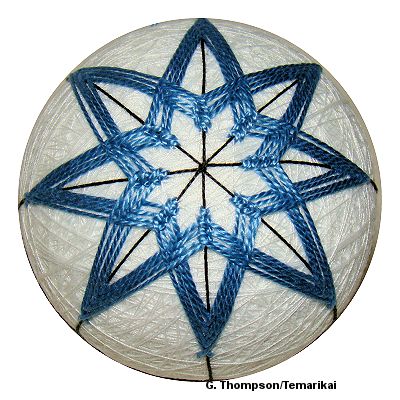 |
As the rows continue, the single stitch "rib" will emerge. Insure that the crossovers are aligned. Groom threads as needed. |
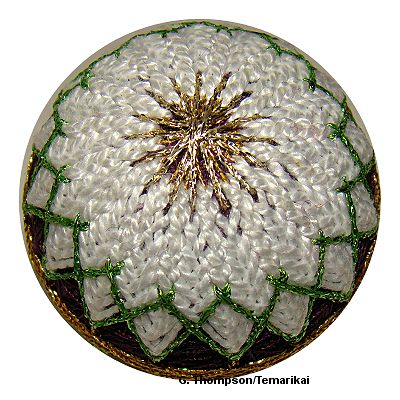 |
Sujidate Uwagake Kagari can offer many varying effects based on size of the mari, number of marking lines, and number of rows worked or skipped. |
Last updated 11/2015 © 1998 - 2015 G. Thompson/PuffinStuff, Inc.
